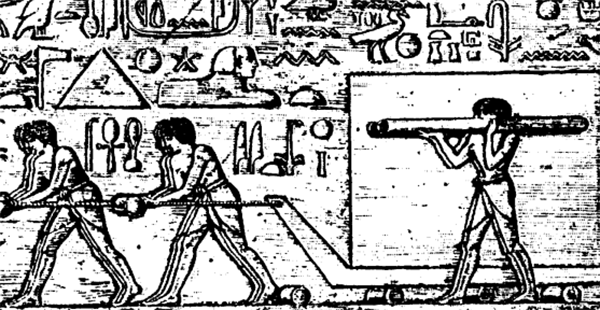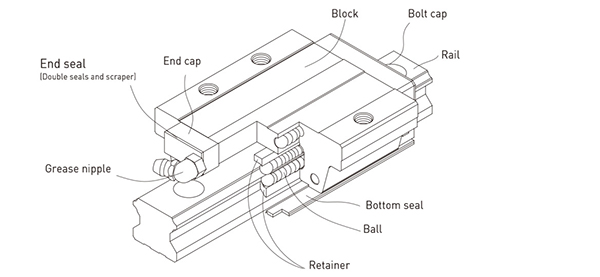Attempts to replace sliding with rolling contact appear to have been entertained even in the prehistoric age. The picture blow is a wall painting in Egypt. A huge stone is being transported rather easily on rolling logs laid underneath it. The way those used logs are being carried over to the front side depicts exactly how a rolling element circulation mechanism functions in today's rolling element linear motion bearings.

Although rolling element linear motion bearings find their origin way back in the ancient times, they did not easily come to common use as mechanical elements until the early 20th century, when those rolling element linear motion bearings using steel balls for their accurate and smooth linear movement facilitated an application to precision machines.
The basic mechanism of rolling element linear motion bearings was established in 1946 when a U.S. company, Thomson, commercialized ball bushings (a ball re-circulation type). The basis of today's linear guides (rolling units with rails) can be seen in a patent granted in France in 1932 . This patent, though encompassing all of the fundamental functions of linear guides, still had to keep waiting for decades before their application debut in the market. During that time, several machinery parts that use rolling elements such as ball screws or ball splines were commercialized. Various types of ball bushings (linear ball bearings) were also brought in to the market, including an open type bearings. In the meantime, numerous inventions and improvements of similar kinds were made to the linear guides.

We, PYG-Zhejiang Pengyin Technology Development Co., LTD, are a high-tech enterprise focuses onthe research and development of linear transmission precision components and innovative design for more than 20 years.In order to meet the global production demand, PYG continues to expand production and processing equipment, introduce international advanced precision equipment and modern technology, PYG has the ability to mass produce ultra-high precision linearguides with sliding accuracy less than 0.003 mm.
Post time: May-13-2024










